Exploring the Essence of Industrial Style in Interior Design
As an interior designer with over 3 years of research and hands-on experience transforming home décor, I’m thrilled to walk you through the world of industrial style. Currently surging in popularity, this aesthetic blends vintage warehouse charm with modern minimalism.
From its historical underpinnings to current applications, let’s discover creative ways to embrace industrial influences in your own abode.
Understanding this hot trend will ensure your spaces feel genuinely authentic versus clichéd. Let’s explore the industrial style’s essence and transform your perspectives!
Table of Contents
- What is industrial style in interior design?
- Incorporating industrial style in your home
- Industrial style in different spaces
- Evolving trends in industrial design
- Iconic industrial style landmarks
- Your industrial style journey begins
- FAQs about industrial style
- What is an industrial style in interior design?
- How can I incorporate industrial style into my home decor?
- What are the key elements of industrial style?
- Are there any famous examples of industrial-style architecture?
- What materials are commonly used in industrial-style furniture?
- Can industrial style be combined with other design styles?
- Is the industrial style suitable for small living spaces?
- Final thoughts
What is industrial style in interior design?
The industrial style emerged in the 20th century, representing the raw yet artistic aesthetic of factories and warehouses.

Exposed structural materials like metal, concrete, and salvaged wood define the look. Source: Foyr Neo [1]
Having designed lofts and commercial spaces for years, I've seen firsthand how customers get drawn toward these authentic imperfections over mass-produced perfection. The deliberate marks of manufacturing become badges of honor rather than flaws to hide.
An industrial interior fully embraces these influences through a blend of minimalist Bauhaus-inspired furniture, embellished piping flaunting solder marks, and weathered patinas resembling well-used equipment.
Rather than masking function, industrial design spotlights it. Structural elements like exposed brick, ductwork, and distressed wood balances take center stage instead of getting concealed behind drywall and wallpaper. The blending of materials and history creates wonderful visual depth and textural interest compared to homogenized décors.
The origins of industrial design
The industrial style has working-class roots. Early 20th-century factories and warehouses focused on productivity over presentation. These cavernous structures emphasized utility through cost-efficient, low-maintenance materials like concrete, metal, and unfinished wood.
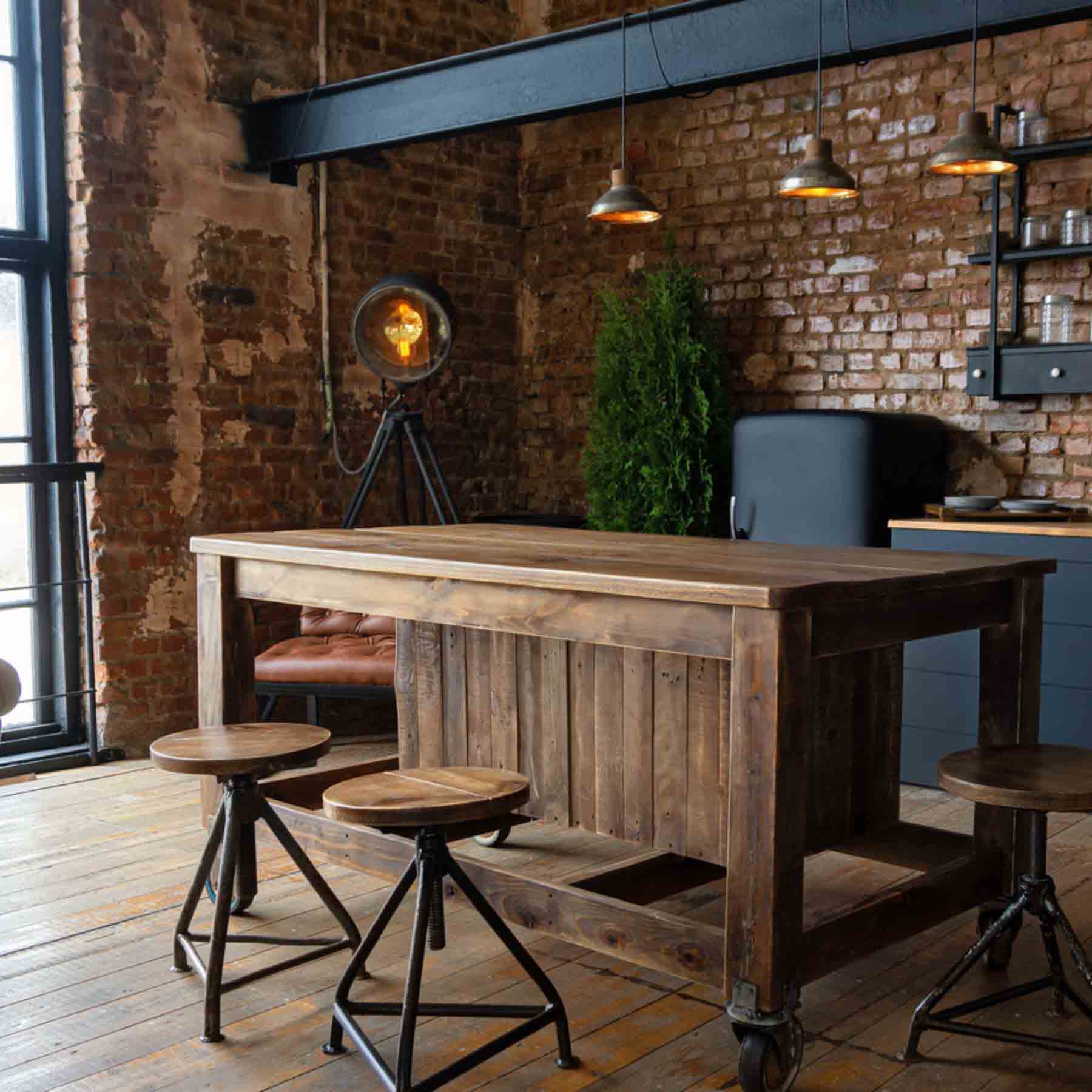
The essence of this interior design style leans towards rustic authenticity. Source: House Digest [2]
Form followed function - buildings showcased structural iron beams, unfinished concrete floors, exposed brick walls, and metal corrugated exteriors. Minimal lighting came from wire-mesh glass skylights or hanging bulbs.
These practical sensibilities eventually bled into architectural and interior design trends. As society moved away from ornate Victorian styles, sleeker, pared-down “machine age” looks prevailed thanks to the Bauhaus art movement.
Iconic designers like Le Corbusier and Mies van der Rohe popularized using industrial materials like bent metal frames and leather strapping in furniture.
Key elements of industrial style
The most characteristic industrial materials include metal, concrete, and wood. Metal introduces weathered galvanized steel, copper pipes, tin tiles, and wire mesh. Mixing natural and synthetic textiles like cotton, wool, leather, and vinyl also suits the aesthetic.
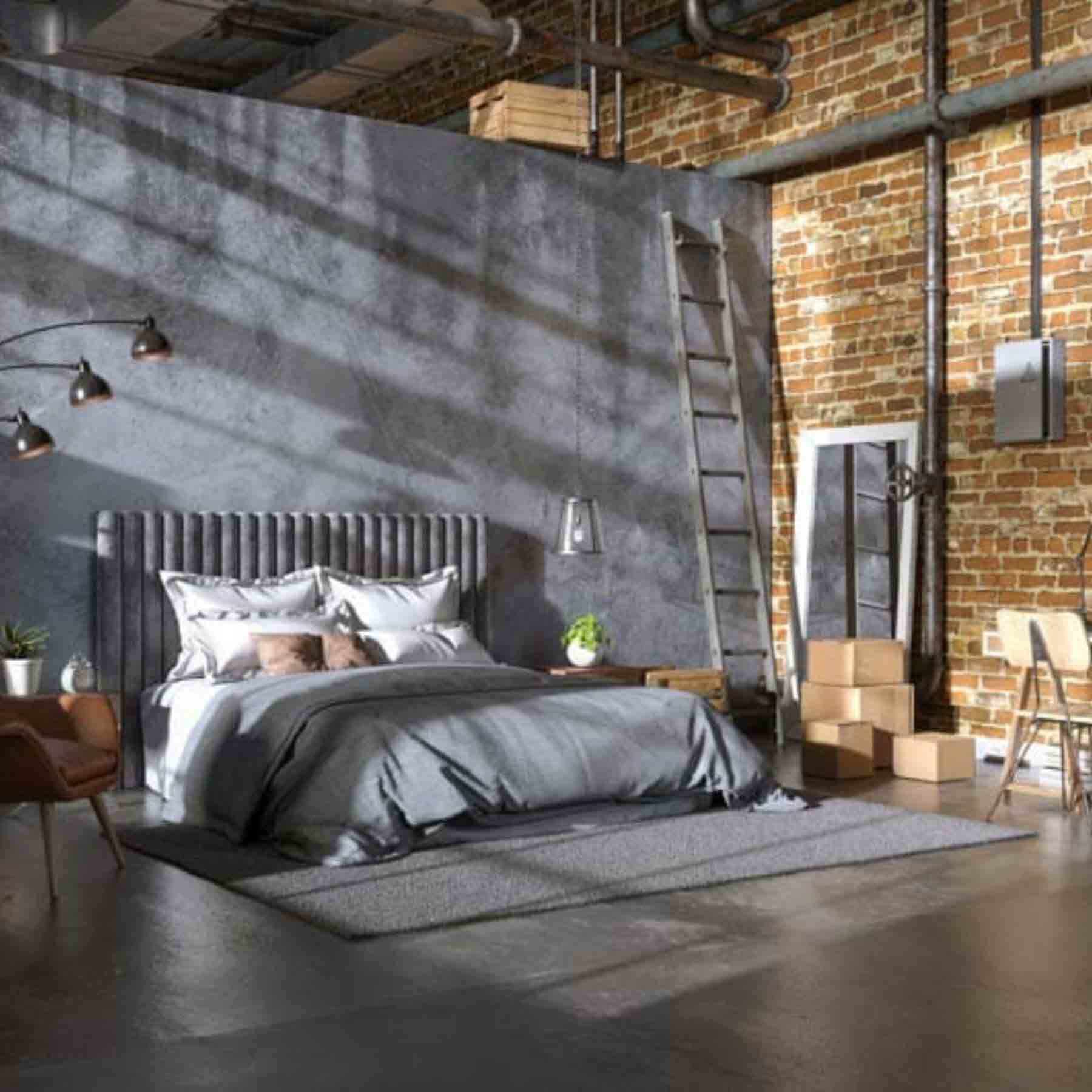
The materials also convey a rugged, transparent, and icy vibe rather than a warm one. Source: Designing Idea [3]
Salvaged goods like dingy metal toolboxes, tarnished copper urns, or patinated bronze machine parts display heritage appeal.
Concrete delivers cool sleekness yet seems sterile without contrast. Pair it with reclaimed wood in chunky tabletops or unpolished wire-brushed finishes. For more visual interest, the team intentionally mismatched colors and multi-toned wood stains on the same piece.
Incorporating industrial style in your home
When thoughtfully incorporated, rugged industrial décor brings wonderful visual depth and heritage appeal compared to homogenous hotel-like spaces. Here are my insider tips:
Furniture and materials
Industrial furniture celebrates the marks of manufacturing - think exposed joinery, nail holes, stenciled factory codes, splintered edges, and multi-toned finishes. These traces of workmanship trump mass-produced perfection.
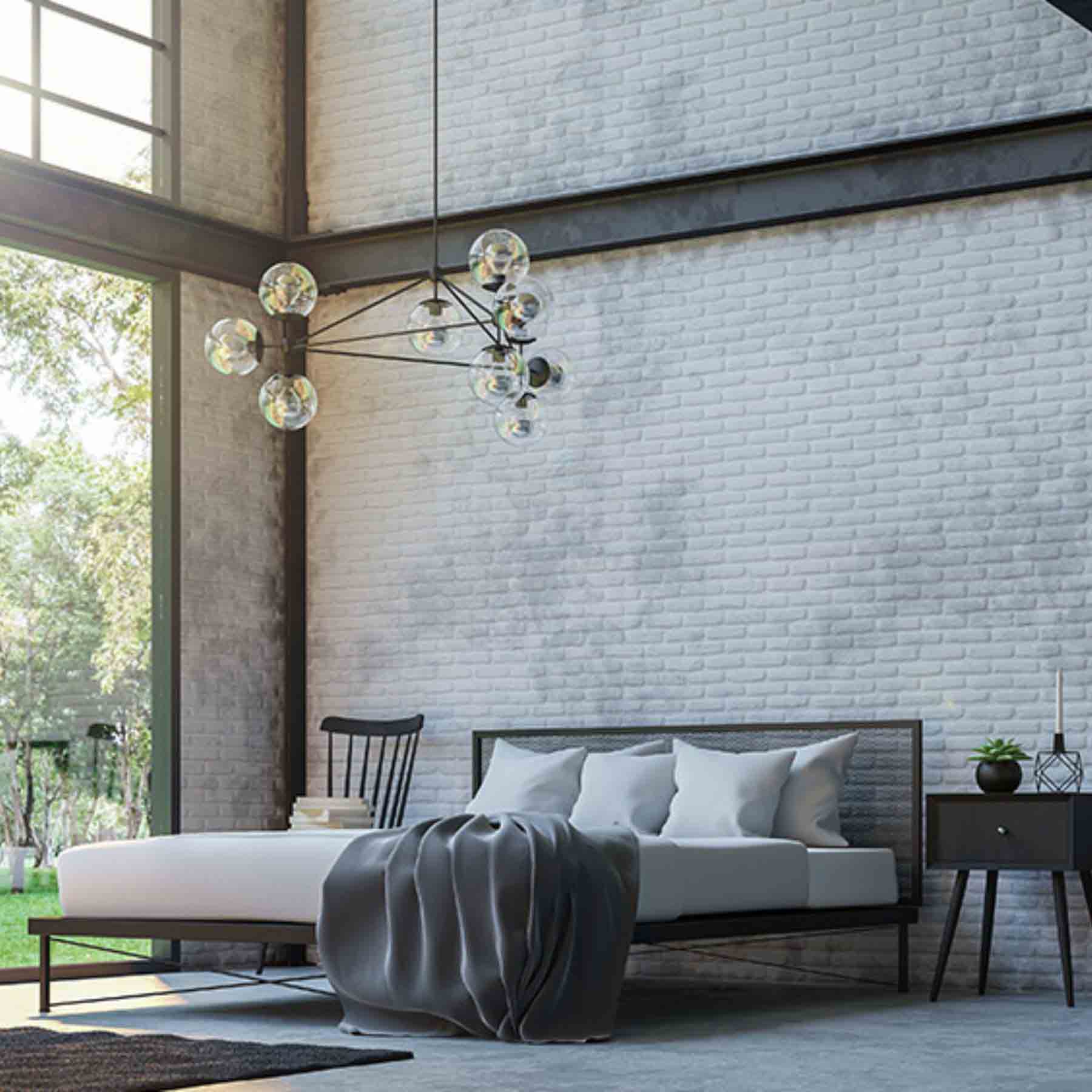
Industrial style aims for a unique and distinctive imprint that resonates with the users. Source: Design Café [4]
Seek out unique shapes showing innovative welding, folding, and casting. Salvaged goods like technicians' carts, file cabinets, and machine shop locker cabinets inject modern vintage mashup charm.
For smaller touches, display repurposed vintage items like porcelain enamel factory clocks, worn leather toolbags, and metallic wire letter baskets showcasing patina.
Or spotlight reclaimed goods like surveyor tripods, camera equipment, and astrology tools reinvented into ornamental sculptures. These unexpected flourishes introduce intrigue.
Color palettes
Industrial color palettes reference manufacturing materials: think weathered barn wood, galvanized tin, forged steel brackets, and scuffed warehouse concrete floors.
Deep organic hues like burgundy, moss, and mustard resemble aged wood, well-oiled iron, faded boiler suits, and rusted machinery parts. For striking pops, inject sunflower yellow, azure blue, and cherry red, evoking warning signs, electrical wiring, and emergency stop buttons.
Industrial style in different spaces
Beyond decor, consider an overarching industrial design approach tailored to each living area. Here are some key concepts:
Industrial kitchen ideas
Pull from urban loft inspiration with exposed brick backsplashes and distressed concrete floors. Add open blackened steel shelving units to display glassware and cookware collections. In one project, we built a shared concrete island fitted with industrial barstools. This became the social epicenter where friends/family gathered and embodied that communal workshop spirit.
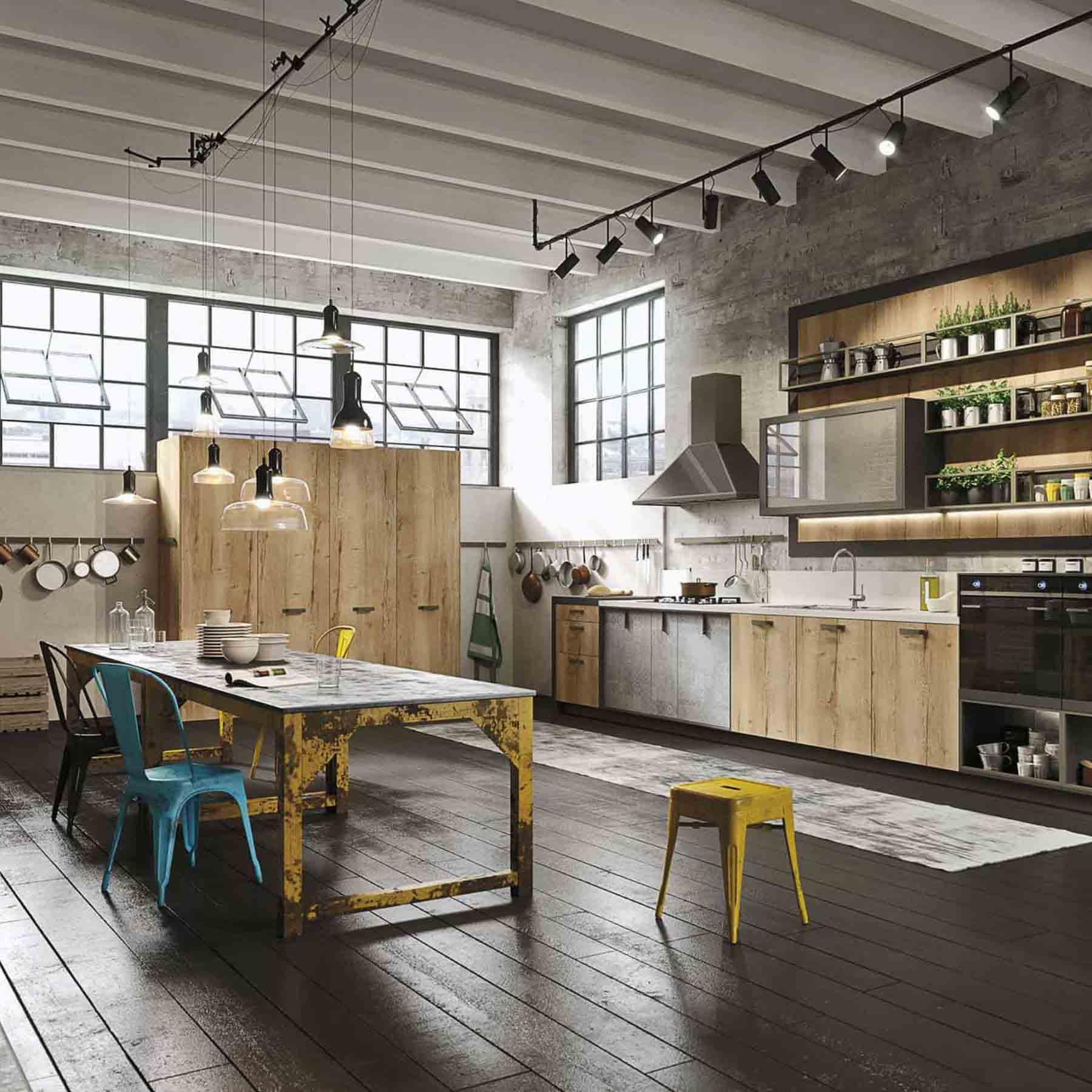
For the kitchen, creating an open space allows the home to feel airy and spacious. Source: Trendir [5]
Use a professional-grade stainless steel workbench as a kitchen island paired with industrial metal stools featuring tractor seat upholstery in leather or vinyl. Include vintage pulley pendant lights over the island fitted with Edison filaments.
Opt for a butcher block-style wood preparation table contrasting the metal surfaces. Create a breakfast nook from salvaged wood shipping crates reinforced with black iron brackets. Style them with Tolix side chairs and a modern spool table base.
Creating an industrial bedroom
Softness balances modern industrial bedrooms. Upcycle a carved oak bed frame by exposing the joinery with metal corner brackets. Layer in floral print linen pillows and throw against concrete bedside tables.
Build a cozy reading nook with a classic Eames armchair and ottoman surrounded by arching floor lamps fitted with sculptural perforated shades. Use a hemp area rug adding organic texture while softening acoustic footsteps.
Industrial office and retail spaces
Drawing from my commercial space experience, the industrial style introduces heritage appeal even in workplace settings.
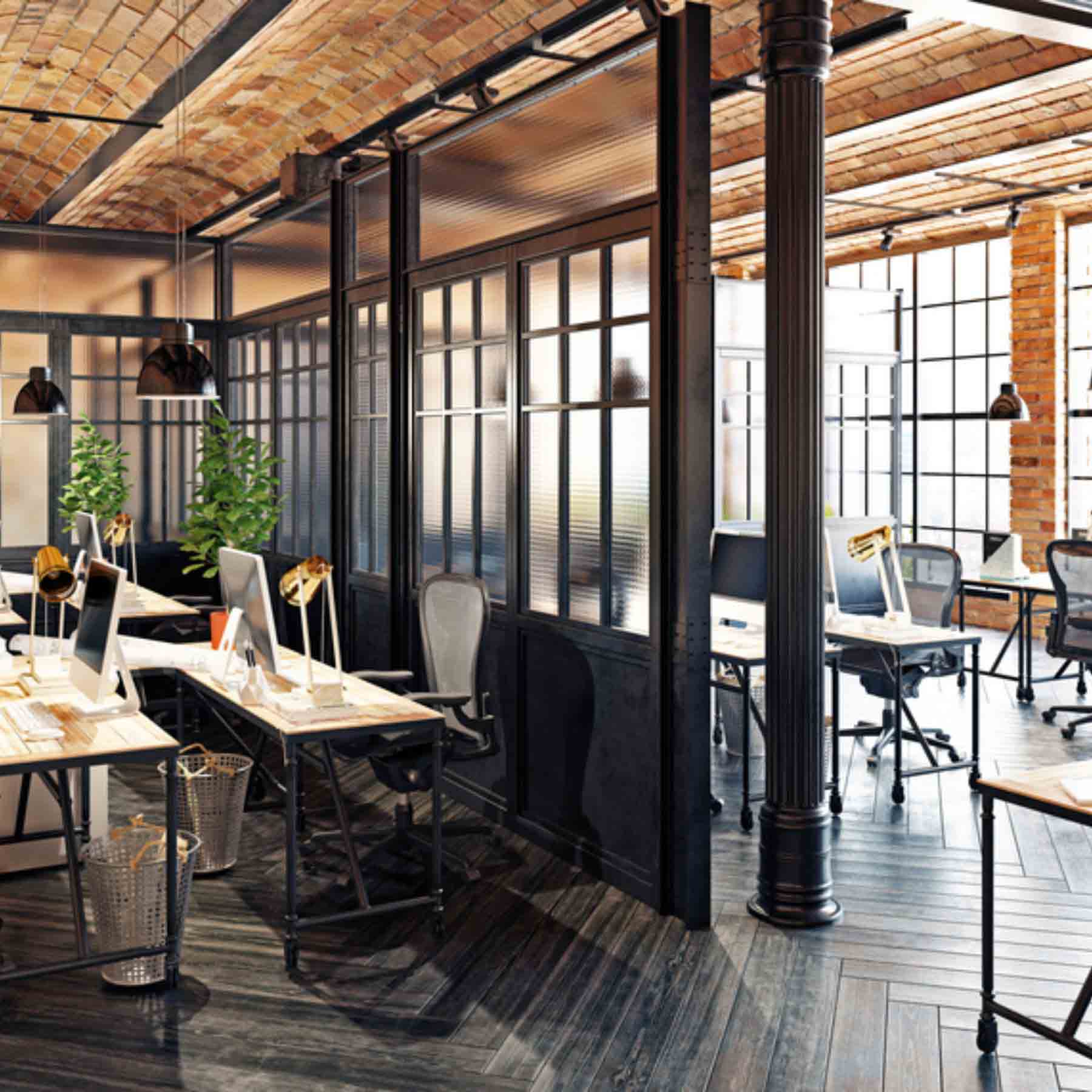
In a commercial setting, the industrial style evokes a modern and minimalist feel. Source: PierPointUSA [6]
For wall surfaces, praise the functional roots of the aesthetic. Expose original structural bricks interlaced with wood supports or use poured concrete with a textured wire-brushed finish that reveals the inner gravel aggregate.
Contrast these structural beginnings by also installing reclaimed wood wall cladding stained in multi-toned charcoals, which echoes the worn patina of production line floors.
For lighting, draw inspiration from 20th-century factories and install suspended conduit lighting tracks with directional spotlights.
Use these to spotlight display tables crafted from massive reclaimed teak wood salvaged from old boat piers. The natural wood grains contrast beautifully against concrete floors for stunning differentiation.
Evolving trends in industrial design
Like any style, the industrial aesthetic continues progressing through new interpretations. Here are some leading directions:
Minimalist industrial
The Bauhaus “less is more” movement and Japanese wabi-sabi philosophy both align with industrial principles of restrained simplicity and honesty of materials.

Merging Minimalism and Industrial creates a modern, serene ambiance for homeowners. Source: Attitude Interior Design Magazine [7]
Expect very sparse interiors with just one or two standout furniture statements made from basic, raw materials like wood, stone, and concrete. The focus falls on innate unconcealed beauty rather than decorative embellishments.
Sustainable industrial
Salvaging and upcycling manufacturing leftovers have always been integral to the industrial eco-principles. However, new technologies now facilitate even more ethical and eco-friendly production methods.
Expect more furniture and structures showcasing upcycled plastics, bio-composite materials, and textiles made from recycled electronics and cameras.
Vintage vs modern remixes
Some design traditionalists continue seeking early mid-20th century antique factory carts, stools, lighting, and machine parts for preservation. However, many contemporary designers are putting modern spins on those classics via custom fabrication.
New metal-bending and concrete casting techniques unlock bespoke iterations. This interplay between old and new across materials, processes, and forms points to an evolving aesthetic.
Iconic industrial style landmarks
Beyond private residences, some famous public buildings openly showcase industrial aesthetics:
Famous industrial architecture
Having studied structural design, I truly appreciate buildings that reveal rather than mask mechanical systems. The Pompidou Centre’s visible multi-colored exoskeleton of ducts and tubes remains an enduring emblem of radical postmodern transparency.

With this design, the museum becomes unique and stands out in the market. Source: The Guardian [8]
Similarly, the enormous unadorned Turbine Hall at London’s Tate Modern Art Museum pays homage to the structure’s original use of generating electricity. The vast 35m tall space hosts epic annual commissions while amplifying a contemplative mood.
Contrastingly, Norman Foster’s iconic Lloyd’s Building discretely integrates services like HVAC systems and pipes into its high-tech glass facade. This fusion of apparent lightness and invisible infrastructure reflects emerging sustainable architecture.
Cultural influences
Industrial motifs permeate other creative spheres like visual arts, graphics, fashion, and entertainment:
- Photographers cast early factories and machine forms in heroic lighting, reminiscent of Soviet propaganda posters celebrating laborers. Pop artists co-opted screen printing and mass production tied to manufacturing.
- Fashion designers added utilitarian details like exposed zips and stripped-back seaming to augment feminine silhouettes. Movies adapted gritty, abandoned warehouses and factories as archetypical dystopian environments. Beyond visuals, industrial sounds like heavy machinery clanking and whirring punctuate soundtracks.
Your industrial style journey begins
I hope this overview gets you excited to embrace industrial influences when designing your own spaces. Here are some parting thoughts for your journey ahead.
DIY industrial decor
Getting started with DIY industrial decor features many easy beginner projects suitable for all budgets. For example, breathe new life into secondhand furniture finds from garage sales or thrift stores by refinishing the surfaces with updated wood stains, metallic spray paints or custom hardware.
Showcase your recycling prowess or support sustainable principles by upcycling used glass bottles, tin cans, or plastic containers into hanging pendant lights to illuminate desktops or accent walls. If carpentry inspires you, construct organizer shelves using plumbing pipes or wooden pallets to hold workshop tools.
You can also collate scrap pieces of metal, wood, and fabric into engaging abstract wall art. Watch for local building demolitions as opportunities to reclaim oak or maple floorboards and paneling at affordable prices for furniture or tabletops in industrial spaces.
Affordable industrial finds
Beyond checking antique stores when sourcing decorative elements or furnishings, also scout second-hand furniture shops, community garage sales, and online auction marketplaces for hidden gems.
Some of my best vintage industrial finds came from hole-in-the-wall salvage companies specializing in reclaimed building materials.
Be adventurous and curious – visit new neighborhoods to uncover trendy boutiques, makers’ workshops, and pop-up markets likely holding delightful decorative surprises waiting to be discovered by keen-eyed shoppers like yourself.
Eco-friendly industrial style
When designing overall spaces influenced by industrial style, I urge you to honor its roots in sustainable principles by making environmental consciousness central to your approach.

Considering brands that align with eco-friendly principles from production to the final product. Source: Pinterest [9]
First, seek out brands that reuse demolition construction waste for upcycling into innovative furniture or materials supporting circular economic models.
Scout locally owned stores specializing in artisanal products crafted by independent makers committed to eco-friendly practices.
Before resorting to buying brand-new mass-produced pieces from big box retailers, breathe renewed charm into what you already own – a simple coat of chalk paint or wood stain can re-energize tired furnishings in an earth-friendly fashion.
When constructing new signature elements to showcase as focal points, carefully research companies embracing ethical systems for manufacturing, sourcing sustainable materials, and responsibly stewarding supply chains through transparent partnerships.
FAQs about industrial style
Below, find condensed answers to common industrial style questions:
What is an industrial style in interior design?
- Industrial style incorporates factory and warehouse influences through exposed pipes, metal framing, reclaimed wood, and a minimalist aesthetic. It highlights functional structures versus decorative elements.
How can I incorporate industrial style into my home decor?
- Add furniture showcasing metal, salvaged wood, leather, and eclectic mixes of materials. Use wall hangings featuring old tools or machine parts.
- Create an accent wall with wood pallets or distressed concrete.
What are the key elements of industrial style?
- Key elements include weathered woods, galvanized metal, concrete, exposed pipes and ductwork, salvaged goods, and equipment fitted with caster wheels promoting flexibility.
Are there any famous examples of industrial-style architecture?
- Yes, many famous buildings integrate industrial elements, like the Pompidou Centre in Paris, the Tate Modern Turbine Hall in London, and the Lloyd’s Building in the UK.
What materials are commonly used in industrial-style furniture?
- Common materials include salvaged wood, galvanized metal, iron, copper, concrete, leather, and vinyl.
Can industrial style be combined with other design styles?
- Yes, industrial style complements both vintage and contemporary aesthetics. Many designers blend it with Scandinavian influences and mid-century modern looks.
Is the industrial style suitable for small living spaces?
- Yes, you can introduce industrial influences through lighting fixtures, exposed piping, a signature furniture piece, or an accent wall without overwhelming a small space.
Final thoughts
In conclusion, delving into the essence of industrial style reveals a captivating world of raw authenticity, rugged beauty, and functional design.
As we explore the nuances of industrial design in interior design, we unlock the potential to infuse living spaces with character, telling a story that is both rich in history and forward-thinking. I hope that you have a clear understanding and knowledge about this style and get ready to transform your house!
Source:
- [1] - https://foyr.com/learn/modern-industrial-interior-design-style/
- [2] - https://www.housedigest.com/990404/is-the-industrial-aesthetic-going-out-of-style/
- [3] - https://designingidea.com/industrial-bedroom-furniture/
- [4] - https://www.designcafe.com/blog/home-interiors/industrial-style-interior-design-ideas-for-your-home/
- [5] - https://www.trendir.com/kitchen-designs-for-loft-3-urban-ideas-from-snaidero/
- [6] - https://pierpointusa.com/blog/commercial-interior-design/
- [7] - https://www.attitude-mag.com/en/blog/all/2019-06-25-industrial-minimalism/
- [8] - https://www.theguardian.com/artanddesign/2022/oct/10/cecilia-vicunas-brain-forest-quipu-turbine-hall-review-tate-modern-london
- [9] - https://www.pinterest.com/pin/612841461816304479/
Related Posts

15 Tech Lighting Pendant Inspirations for a Modern Home
In the ever-evolving realm of interior design, rattan has emerged as a star player, captivating homeowners with its natural allure and timeless sophistication. The current trend towards embracing n...

A Guide to Mixing Rattan Pendant Lights with Varied Styles
From colorful panels to intricate weaves, rattan pendant lights make a stylish statement in any interior space. With their natural textures and customizable shapes, they beautifully complement and ...


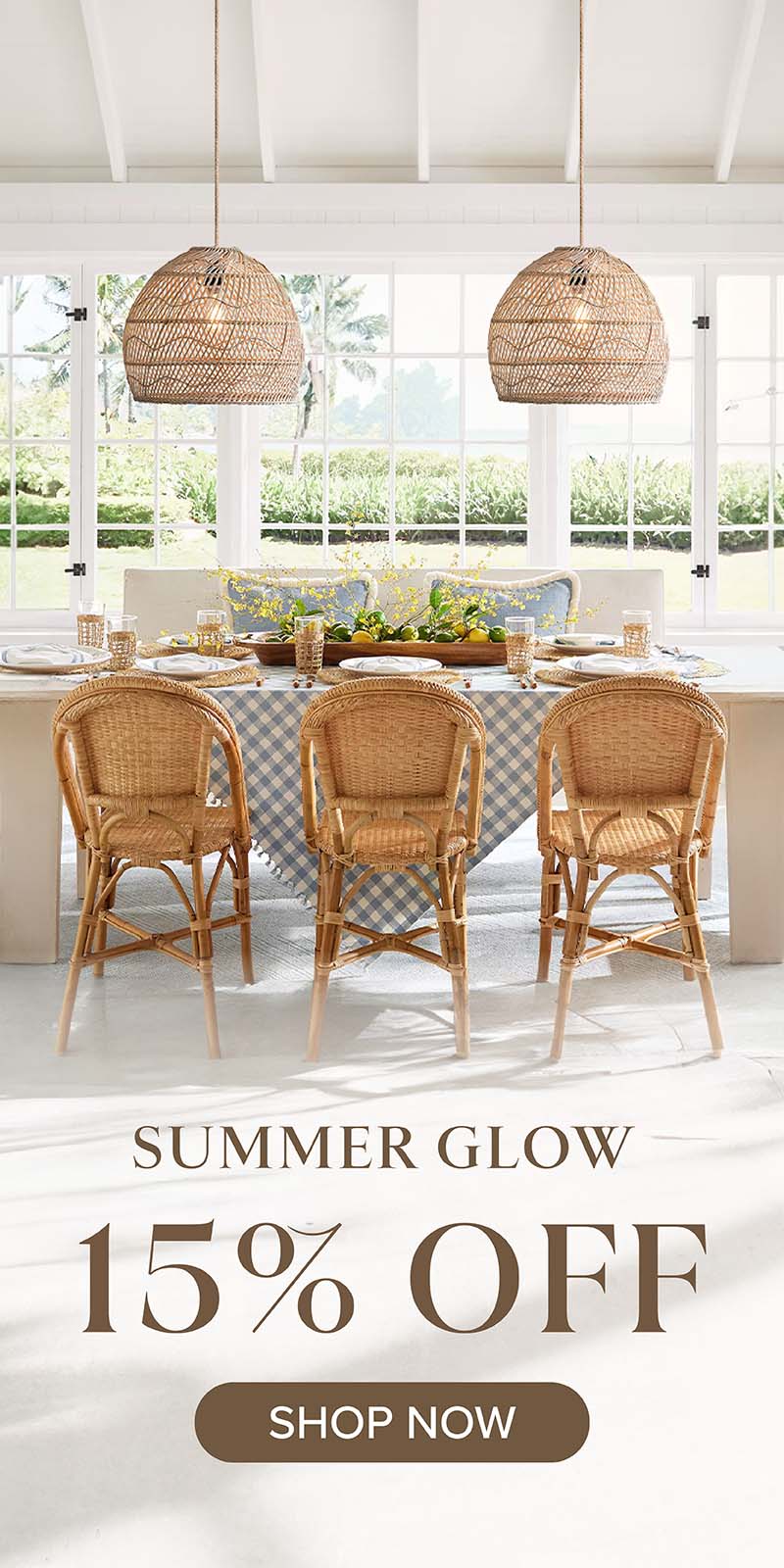
Leave a comment
This site is protected by reCAPTCHA and the Google Privacy Policy and Terms of Service apply.